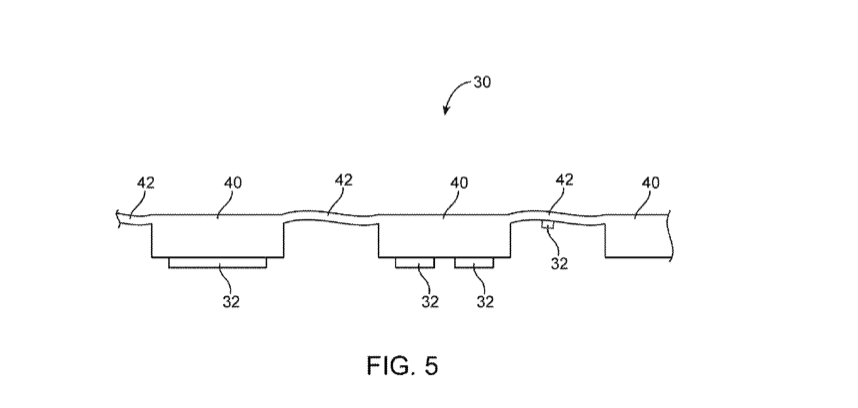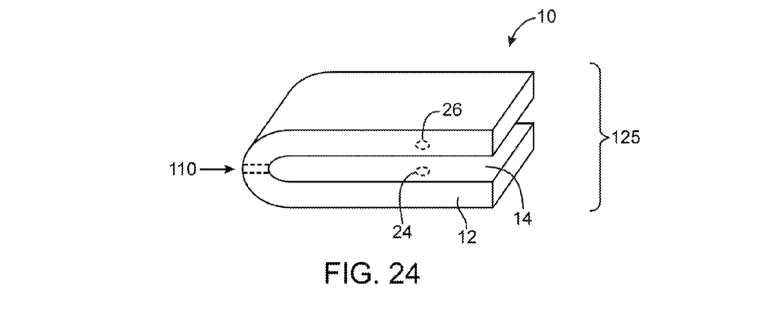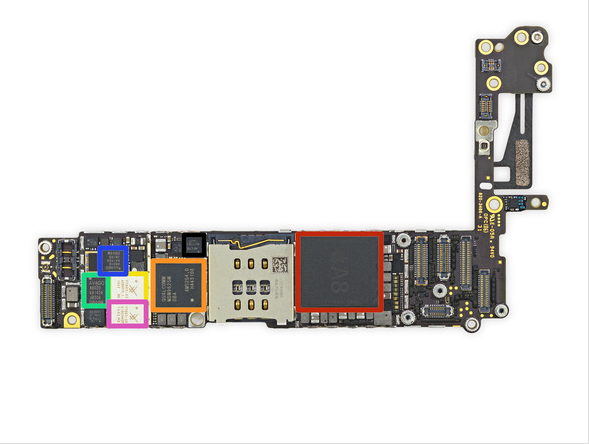apple’s one piece flip phone
Last Tuesday’s scrutiny of just-issued Apple patents at the USPTO came across 8,929,085 a.k.a the ‘085 patent or “Flexible Electronic Devices”.
Early, if not the earliest coverage came from AppleInsider. The ensuing flurry of articles petered out towards the end of the week, with the last I saw coming from Forbes today. Unfortunately the high point of the AppleInsider article was the title. To generalize, the overall feeling coming from the articles was the ‘085 patent provided plenty of information around how to achieve a flexible phone or “device”. I guess the question at hand is whether I came away with the same reading.
The place to start is the Detailed Description. Early Figures of the ‘085 patent, say 1 to 4, and the accompanying description present very generic statements of a flexible, housing, display, battery and printed circuit board. Certainly, if one only read this far or thought everything in the Detailed Description was novel they might believe this discussion of flexible stuff is innovative. This is not my impression. They are simply statements and descriptions that are needed to set-up or facilitate the later material.
The first question that came to mind for me was just how flexible can the printed circuit board be with the integrated circuits (ICs) located thereon. The ICs certainly can not be made flexible for the foreseeable future. This brings us to Figure 5 where a circuit board having rigid (40) and flexible(42) sections is presented. ICs or devices 32 are located on the rigid sections. It certainly seems that this is an important embodiment as it is well described. Figures 6A and 6B go on to present alternate, related approaches having rigid and flexible sections. Similar rigid and flexible composite structures for the battery are presented in Figures 8 to 13.
OK this is interesting but where are we going?
Starting with Figure 18 we are presented with embodiments where the housing can be bent, or is flexible, along certain “lines”. This is presented as line 110 in Figure 18. If one skips ahead to Figure 24 we see a case where the device 10 is folded in half along line 110. Here the proximity sensors 24 and 26 become adjacent to one another. Presto blinko we have a flip phone.
A final thought comes back to the likelihood of such a device. Each new generation of iPhone seems to be thinner than the last. It could be argued that breaking the battery and printed circuit board into flexible and rigid sections would add size to both. It is instructive to look at the printed circuit board of the iPhone 6. One can quickly see that there is not a lot of excess real estate outside of the ICs.
One wonders how and where the flexible sections would be incorporated, what the final flexibility would be, and most importantly, what the final size would be. In the end, there were some neat ideas in ’085 that are duly noted, but I would not get too excited about seeing a flexible device in the near future.





